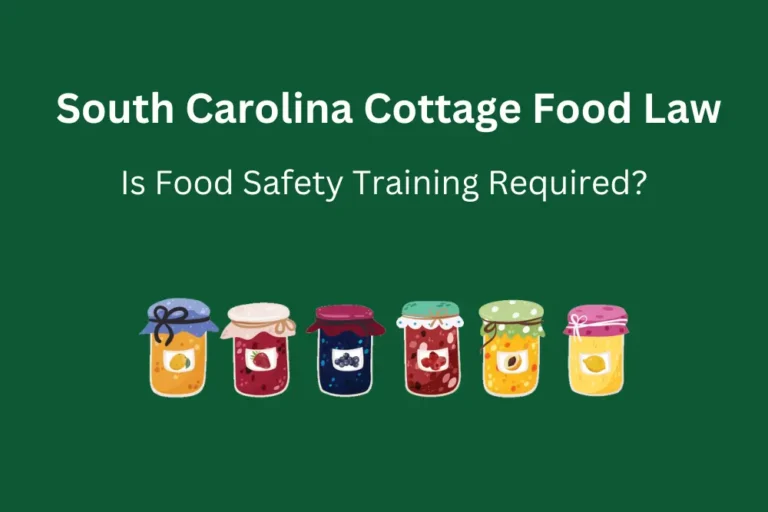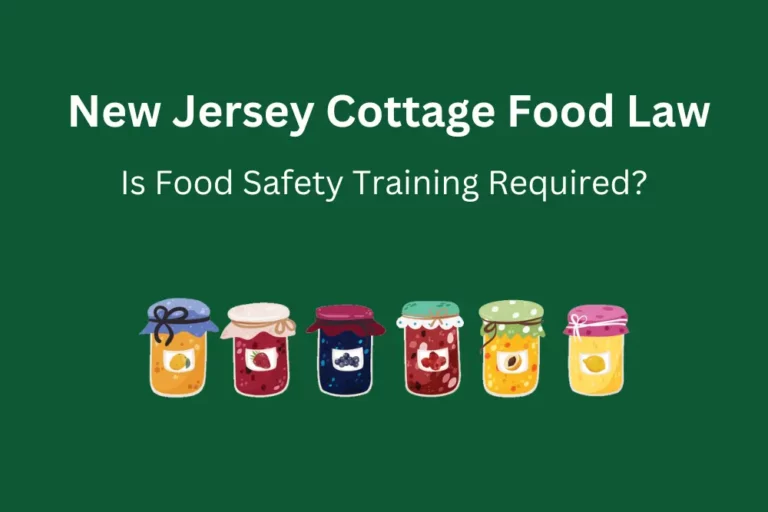California Cottage Food Law: Food Safety Training Requirements
Food that you make at home and sell is known as cottage food.
Cottage food has become increasingly popular as more people want to know where their food comes from and who makes it.
Each state has its own cottage food laws, which regulates the types of foods you can sell and to whom and how you can sell them.
As a component of this law, some states also require food safety training.
This article discusses the California cottage food law, and whether you need food safety training to sell homemade food.
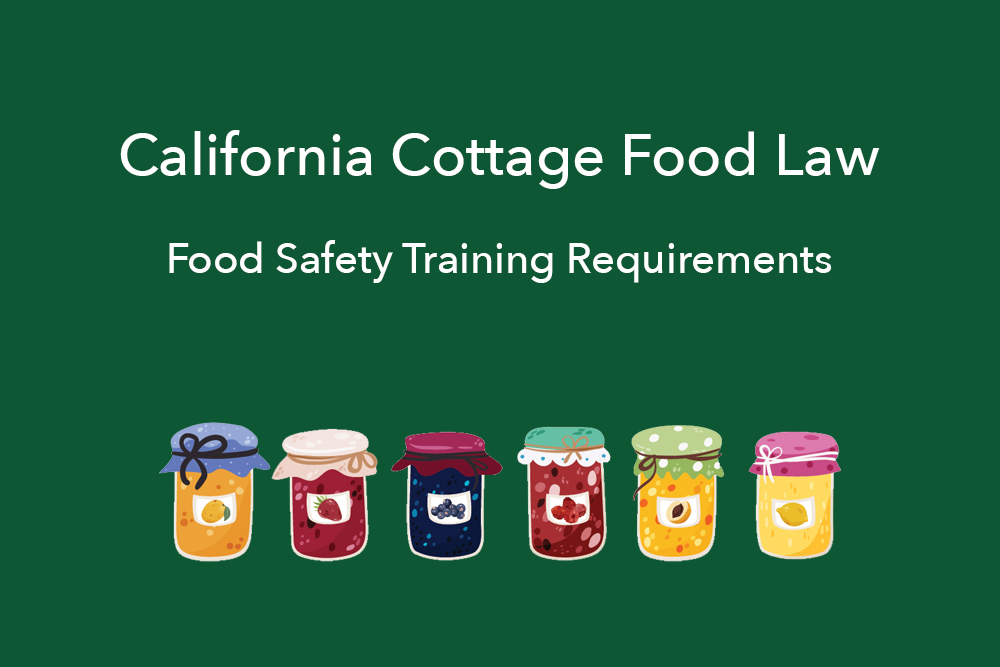
California cottage food operations
California categorizes cottage food operations (CFO) into two classes — Class A and Class B.
As a Class A CFO, you can sell homemade prepared foods directly to the public through various means, such as by delivery, online, or in-person.
As a Class B CFO, you can sell homemade prepared foods directly to the public or indirectly through restaurants and food markets.
Your gross annual sales cannot exceed $75,000 as a Class A CFO, or $150,000 as a Class B CFO. However, these amounts are usually increased each year after adjusting for inflation.
For example, the gross sales were increased to $80,475 for Class A CFOs, and $160,950 for Class B CFOs.
CFOs — regardless of class — can only produce and sell certain categories of non-temperature controlled foods, which don’t support the rapid growth of bacteria that could make a person sick with a foodborne illness.
Approved cottage foods include (1):
- baked goods without cream, custard, or meat fillings
- candy and confections
- extracts containing at least 70% proof or 35% food-grade for human consumption ethanol/alcohol
- dried, dehydrated, and freeze-dried foods
- frostings, icings, fondants, and gum pastes that don’t contain eggs, cream, or cream cheese
- honey and sorghum syrups
- fruit (certain types only) butters, jams, and jellies
- nuts, nut mixes, and nut butters
- powdered drink mixes made from manufactured ingredients
All CFOs must meet the requirements listed in the California Health and Safety code, including:
- preparing and selling from the approved foods list
- completing a cottage foods operator training within three months of registration/permitting
- implementing sanitary operations
- labeling compliant with state and federal regulations
- operating within the established gross annual sales limits
To register as an CFO — whether a Class A or B — you must contact your local Environmental Health Department.
You must then renew your registration or permit annually.
Summary
California classifies cottage food operations as Class A or Class B. Both classes have the same requirements listed in the California Health and Safety Code, but differ in certain ways.
Do you need food safety training to sell homemade food in California?
Some foods like meats, poultry, seafood, dairy products, and leafy greens are more likely to carry disease-causing organisms called pathogens like bacteria and viruses than others.
These foods require time and temperature controls to keep them safe.
While California doesn’t allow you to make and sell these types of foods — known as time-temperature control for safety (TCS) foods — you must still know how to handle approved cottage foods safely to avoid contamination and keep your customers safe.
For this reason, California requires that you complete a food processor course within three months of become registered or permitted as a CFO, and every three years thereafter.
You can satisfy this requirement by taking an ANSI-National Accreditation Board (ANAB)-accredited food handler training course, like FoodSafePal’s.
Earn Your Food Handlers Card + Certificate to Sell Cottage Foods
Finish in 90 Minutes. Meets California’s Cottage Food Law.
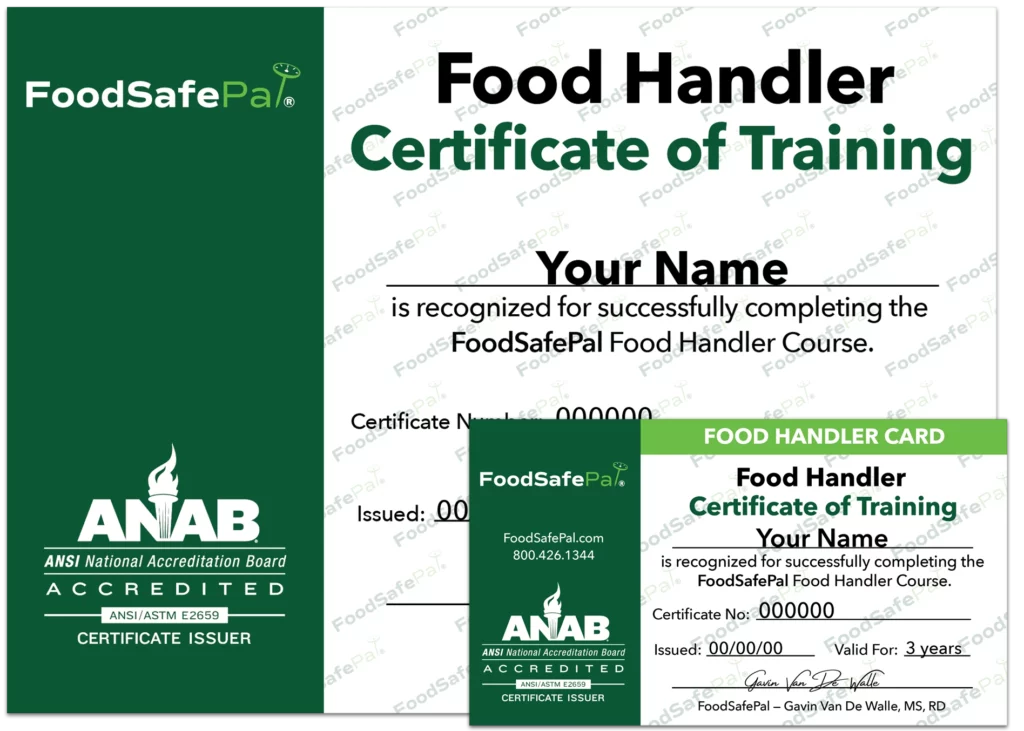
After successfully completing the course, you will receive a food handler card or certificate, which you must have to become registered or permitted as a CFO, and provide to your local health agency upon their request for verification that you have completed the training.
Most accredited food handler courses — including FoodSafePal’s — are offered online, and you can complete them in under two hours.
After completing the course, you must pass a test.
FoodSafePal’s accredited food handler training course consists of 40 multiple-choice questions, and you need to answer at least 28 (70%) correctly to earn your food handler card and certificate.
If you don’t pass the first time, you can retake it for free.
Summary
California requires that you successfully complete a food processor course within three months of becoming a registered or permitted CFO. To satisfy this requirement, you can take an ANAB-accredited food handler course, like the one offered by FoodSafePal.
Labeling requirements
California’s cottage food laws require that each product you sell contain an attached label.
At a minimum, this label must include:
- the statement, “Made in a Home Kitchen” in 12-point font
- the name commonly used for the food product or an adequately descriptive name
- the name of the cottage food operation which produced the product
- the registration or permit number of the “Class A” or “Class B” cottage food operation. In the case of the latter, you must also include the name of the county that issued the permit
- a list of the ingredients, in descending order of predominance by weight
- the net quantity (count, weight, or volume) of the food product, stated in both imperial (English) and metric units.
- A declaration on the label disclosing the presence of a major food allergen
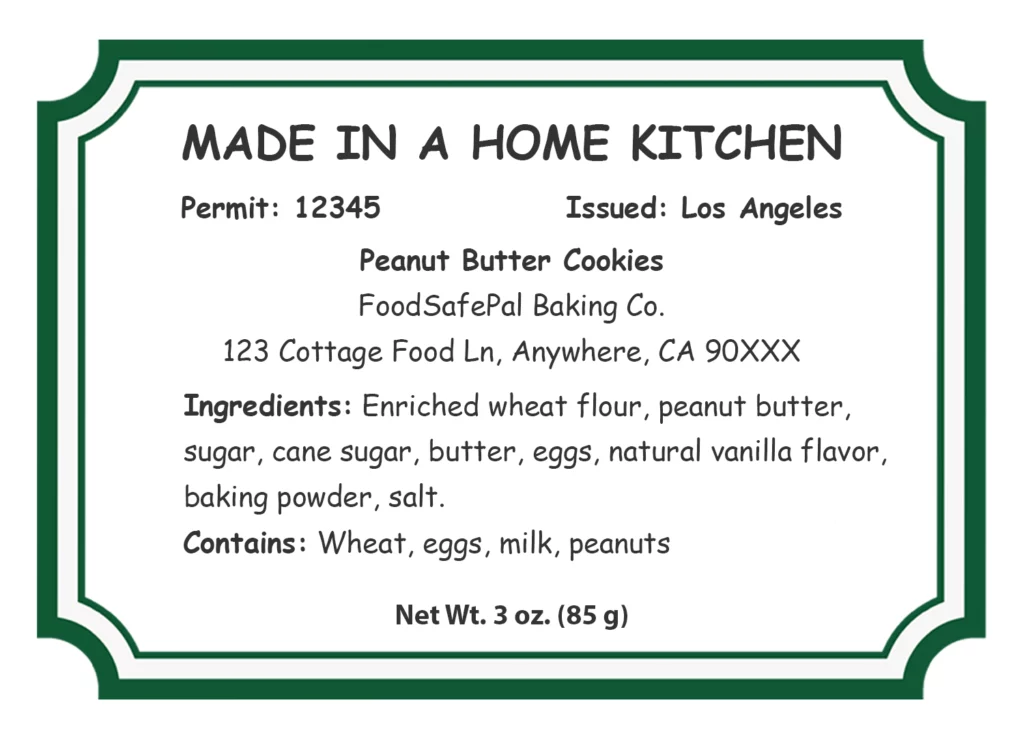
Nutrition Facts panels are not required, unless you make a nutrient content or health claim, in which additional regulations apply.
Summary
California requires that each product contain a label that discloses certain information, such as the name of your operation, registration or permit number, and a list of ingredients, among other things.
The bottom line
California has an approved list of cottage foods that you can sell as either a Class A or Class B CFO.
Regardless of the class, however, California requires you to take a food processor course within three months of becoming registered or permitted with your local health department, among other requirements under the California Health and Safety Code.
California recognizes an ANAB-accredited food handler course — like FoodSafePal’s — to meet this requirement.
Earn Your Food Handlers Card + Certificate to Sell Cottage Foods
Finish in 90 Minutes. Meets California’s Cottage Food Law.

California requires that each product contain a label with information, such as your business name, contact information, ingredients, and the presence of an major food allergens.



